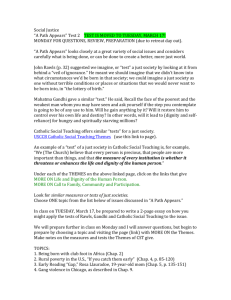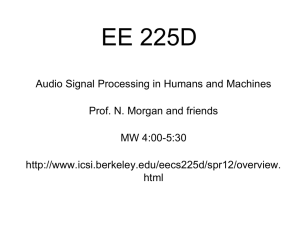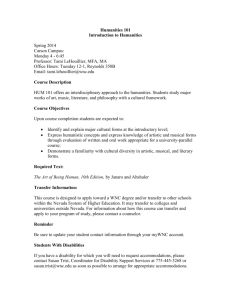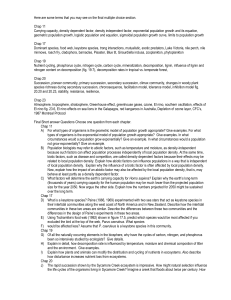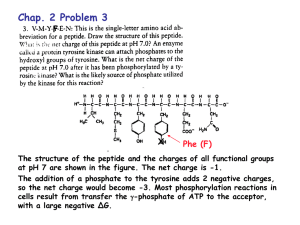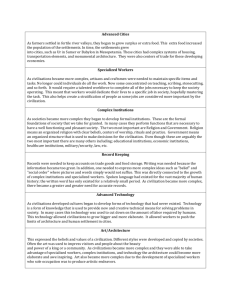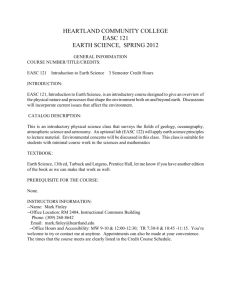Department of History and Philosophy Common Syllabus for History
advertisement
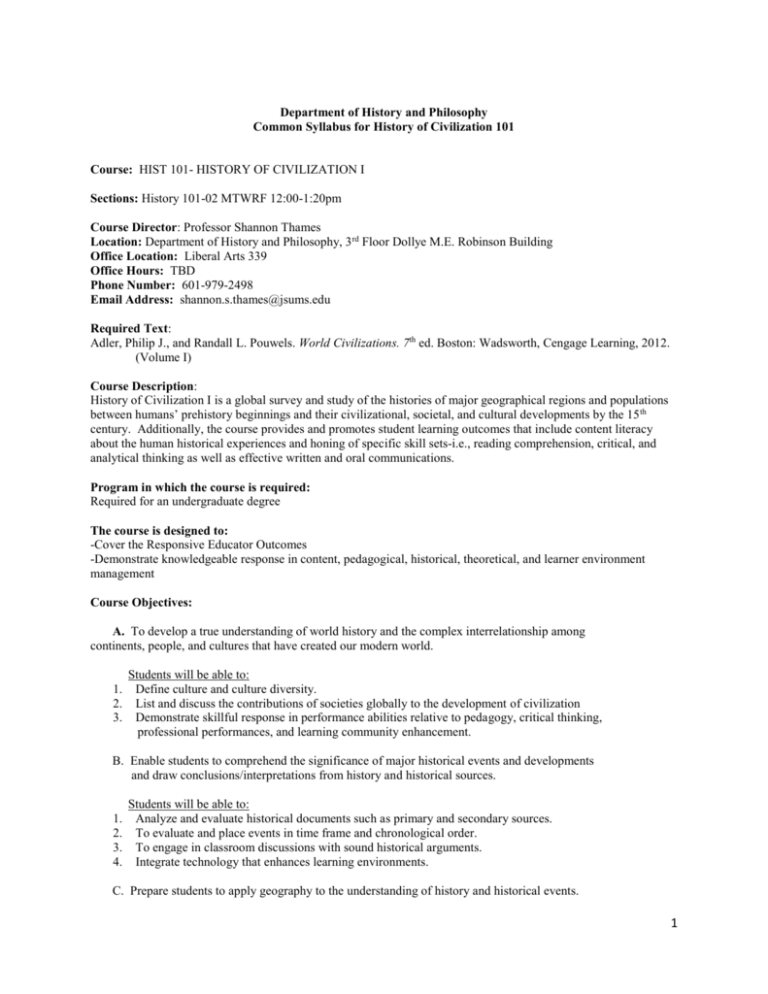
Department of History and Philosophy
Common Syllabus for History of Civilization 101
Course: HIST 101- HISTORY OF CIVILIZATION I
Sections: History 101-02 MTWRF 12:00-1:20pm
Course Director: Professor Shannon Thames
Location: Department of History and Philosophy, 3rd Floor Dollye M.E. Robinson Building
Office Location: Liberal Arts 339
Office Hours: TBD
Phone Number: 601-979-2498
Email Address: shannon.s.thames@jsums.edu
Required Text:
Adler, Philip J., and Randall L. Pouwels. World Civilizations. 7th ed. Boston: Wadsworth, Cengage Learning, 2012.
(Volume I)
Course Description:
History of Civilization I is a global survey and study of the histories of major geographical regions and populations
between humans’ prehistory beginnings and their civilizational, societal, and cultural developments by the 15 th
century. Additionally, the course provides and promotes student learning outcomes that include content literacy
about the human historical experiences and honing of specific skill sets-i.e., reading comprehension, critical, and
analytical thinking as well as effective written and oral communications.
Program in which the course is required:
Required for an undergraduate degree
The course is designed to:
-Cover the Responsive Educator Outcomes
-Demonstrate knowledgeable response in content, pedagogical, historical, theoretical, and learner environment
management
Course Objectives:
A. To develop a true understanding of world history and the complex interrelationship among
continents, people, and cultures that have created our modern world.
1.
2.
3.
Students will be able to:
Define culture and culture diversity.
List and discuss the contributions of societies globally to the development of civilization
Demonstrate skillful response in performance abilities relative to pedagogy, critical thinking,
professional performances, and learning community enhancement.
B. Enable students to comprehend the significance of major historical events and developments
and draw conclusions/interpretations from history and historical sources.
1.
2.
3.
4.
Students will be able to:
Analyze and evaluate historical documents such as primary and secondary sources.
To evaluate and place events in time frame and chronological order.
To engage in classroom discussions with sound historical arguments.
Integrate technology that enhances learning environments.
C. Prepare students to apply geography to the understanding of history and historical events.
1
Students will be able to:
Identify human and physical characteristics of places using maps, graphs, charts and technology.
Identify and describe locations in terms of relationships with other locations and settlement of early
societies.
3. Explain the processes, patterns, technologies and functions of human settlement and their relationships to
other cultures.
4. Demonstrates and understanding knowledge, skills, and professional dispositions necessary to work
effectively in a multifaceted society, and support diversity and the goal of adaptively ensuring that all
students learn.
1.
2.
D. Raise students’ consciousness, literacy and appreciation and cultural differences so that they
will be able to discuss complex issues such as race, religion, ethnicity intelligently.
Students will be able to:
Accurately discuss the contributions of ethnic groups to the development of different nations.
Gain the understanding of the doctrines of major religions.
Discuss the impact that the different religions have in the development of the political system of the
different nations.
4. Gain the understanding of different cultures, culture practices.
5. Analyze and evaluate the changing role of women in the different societies.
6. Evaluate the contributions of past societies
1.
2.
3.
E. Improve students’ reading, writing, and oral communication skills
1.
2.
3.
Students will be able to:
Read more theoretical readings to be analyzed and evaluate in classroom discussions.
Write essays, papers generally free of grammatical error(s) and verbatim appropriation of sources.
Present their research to peer audience.
Course Content by Chapter:
Chapter 1—The Earliest Human Societies
Students will be able to discuss human evolution, the technology and cultures of the people of the Ice Age, the
Agricultural Revolution, and life in Neolithic communities.
Concepts: hominid, evolution, Homo sapiens, Agricultural Revolution.
Chapter 2—Mesopotamia
Students will be able to explain the political and social structures of the earliest civilizations in Mesopotamia, and
the impact of the environment on the Mesopotamian societies and their use of technology.
Concepts: city-state, polis, cuneiform, hieroglyphics, Hammurabi, Hebrew, polytheism, ziggurat, Hittite.
Chapter 3—Early Africa and Egypt
Students will be able to describe the ancient civilizations of Africa and Egypt.
Concepts: pharaoh, monotheism, Old Kingdom, New Kingdom, Middle Kingdom, Hyksos, Bantu speakers, Kush,
Meroe
Chapter 4—Students will be able to compare the achievements of early India to that of China, Egypt, and
Mesopotamia. Students will be able to analyze the social structure of ancient India society, religious beliefs, and the
religions of Jainism, Buddhism, and Hinduism.
Concepts: Mohenjo-Daro, Vedas, Vedic Epoch, Hinduism, caste.
Chapter 5—Warriors and Deities in the Near East
Student will be able to describe the essential characteristics of the Assyrians, Phoenicians, Persians and the Hebrew
society.
Concepts: Assur, Diaspora, Messiah, Nineveh, Zoroaster.
2
Chapter 6—Ancient China to 221 BCE
Students will be able to describe and compare the early societies of China and evaluate their contributions to later
Chinese societies. Students will be able to evaluate the philosophies of Confucianism, Daoism, Legalism, and
Moism and the impact of each philosophy on the Chinese society.
Concepts: The analects, Era of Warring States, Five Great Relationships, Mandate of Heaven, Shang Dynasty,
Confucius, Legalism, Tian.
Chapter 7—The Agrarian Revolution in the Americas
Students will be able to evaluate the first migrants that came in the first wave from northeast Asia. Students will be
able to evaluate the importance of the Agricultural Revolution in the Americas and its impact on bringing about
settled societies.
Concepts: pit house, llamas, maize cultivation, irrigation system.
Chapter 8—The Greek Adventure
Students will be able to evaluate the three epochs of Greek history and the importance of these eras. Students will be
able to distinguish how Classical Greek religion was similar to other, contemporary civilizations. Students will be
able to compare and contrast the governments of Sparta and Athens and list the impact on modern day.
Concepts: Peloponnesians War, Pericles, Ptolemaic Kingdom of Egypt¸ polis, monarchy, Seleucid kingdom of
Persia.
Chapter 9 – Greek Humanism 800-100 BCE
Students will be able to identify and discuss the Greek achievements in philosophy and government and their impact
on modern society. Students will be able to compare Greek culture and science with the accomplishments of other
civilizations of the ancient world.
Concepts: Cynicism, Empiricists, Epicureanism, Stoicism, Plato, mystery religions.
Chapter 10—Rome from city –state to Empire
Students will be able to evaluate and analyze the foundation of the early Roman Empire and their contribution in
law, government and science.
Concepts: Etruscans, Julius Caesar, Patricians, Punic Wars
Chapter 11—The Roman Empire and the Rise of Christianity in the West, 31 BCE-600 CE
Students will be able to trace the development of the Roman Empire and the origin of Christianity.
Rome.
Concepts: the Diaspora, Edict of Milan, Hagia Sophia, Charlemagne, Jesus of Nazareth, Constantinople, manors,
Council of Nicaea, Constantine the Great, Byzantine Empire.
Chapter 12—Classical India
Students will be able to analyze the expansion of Buddhism and its impact on the social structure of ancient Indian
society, and the religions of Hinduism, and Islam. Student will be able to examine the origin of the Caste System
and its impact on the day to day lives of the people.
Concepts: sati, Gupta Dynasty, Upanishads, community of discourse.
Chapter 13—Imperial China in its Golden Age
Students will be able to describe the Chinese Society under the Qin, Han and Tang Dynasties. Students will be able
to analyze the impact of Buddhism on the Chinese culture.
Concepts: First Emperor, Era of Warring states, meritocracy.
1.
Chapter 14—The Post-Classical Era, 800-1400 CE
Students will be able to discuss the culture of the classical period. Students also will be able to compare the cultures
of the Maya, Aztec, Inca and the North American Indians.
Concepts: Tenochtitlan, Teotihuacan, Great House, Four Corners Region.
Chapter 15—Islam
Students will be able to analyze the “revelations” of the founder of Islam and how Islam was spread throughout the
near and Middle East.
3
Concepts: Allah, dhimmis, hirja, jihad, Shi’ite, Sunni, Ramadan, Quran, umma.
Chapter 16 – Mature Islamic Civilization and the First Global Civilization
Student will be able to trace the expansion of Islam into eastern Asia to Africa. Students will also be able to
evaluate the challenges that Muslim faced during expansion.
Concepts: Sharia, Sunna, Ulama, Mongols, Arabian Night.
Chapter 17—Africa From Axum to 1400
Students will be able to evaluate and discuss the principal technological, economical, and ideological developments
that helped to bring Africa into the global and post-classical era.
Concepts: Axum, Ife, Oyo, Patrilineal descent, oba, swahaili, trans-Saharan trade.
Chapter 18—The Mongols Unify Eurasia
Students will be able to discuss the nomadic cultures of Central Asia with emphasis on the Mongols. Students will
be able to evaluate the impact of the Song Dynasty over China and their contribution to the world.
Concepts: Grand Canal, Horde, Temujin, yurts, pastoral nomadism, Kubilai Khan, Chinghis khan
Chapter 19—Japan And southeast Asia
Students will be able to evaluate the early history and the achievements of the Japanese. Also, students will be able
to analyze the relationship and influence of China and Korea on the history of Japan.
Concepts: daimyo, Pagan, Samurai, Shinto, Shogunate, Fujiwara Clan, Tale of Genji.
Chapter 20—The European Middle Ages
Students will be able to describe the changes in medieval society. Students will be able to evaluate the economy and
the impact of religion on society.
Concepts: Benedictine Rule, serfs, vassals, crusades, bourgeoisie, Council of Constance, Black Death.
Chapter 21—The Late European Middle Ages and the Renaissance
Students will be able to explain how the role of the nobility declined in the late Middle Ages. Students
will be able to discuss the major points of the Renaissance, its origin, and how and why it later spread
throughout Europe.
Concepts: guilds, humanism, Renaissance, secularism, utopia, War of the Roses, Third Rome.
Chapter 22—A Large World Opens
Students will be able to describe the impact of the Columbian Exchange on the New World. Students also will be
able to describe the major accomplishments of the voyages of exploration by Asians and non-western people.
Concepts: mercantilism, Vasco de Gama, Dutch East Indian Company.
Instructional Strategies:
Lectures, classroom discussions and technology will be the primary, but not exclusive, strategy of instruction.
Method of Student Evaluation
1. Students will be required to complete a minimum of 1400 words of writing assignments during the course
of the semester. Individual instructors will adapt this writing requirement to the needs and interests of their
individual classes. However, in all sections, this assignment will serve to develop students’ ability to use
historical evidence and to defend a specific argument(s). In order to complete this assignment, students
must demonstrate their ability to work with both primary and secondary historical sources. The writing
assignment will also help students to hone their organizational, reading, and writing skills.
2.
Students will have a minimum of four major evaluations, scheduled during the fourth, eight, twelfth, and
sixteenth weeks of the semester. Additional evaluations may be assigned if judged necessary by the
instructor. These evaluations will test students’ comprehension of the basic historical and social science
concepts described in the syllabus.
4
Grading Scale
A = 90-100
B = 80-89
C = 70-79
D = 60-69
Evaluations:
Class participation and Attendance
20% Personal Reflection
40% Two Examinations
40% Midterm and Final
Personal Reflection: Each student will be required to type a personal reflection throughout the semester. A
minimum of 700 words will be required for the reflection and it should be written in essay form. Although a thesis
statement, body and conclusion are the fundamental components required in most writing assignments, a thesis
statement is not required for your personal reflection. However, a point of view is required for the personal
reflection requirements. (The writing assignments should be double spaced with 12 pt. font, times new roman and 1
inch margin)
Important Due Dates:
June 4th: Examination #1
June 25th : Finals
June 11th: Midterm
June 17th: Personal Reflection due
June 18th : Examination #2
Extra Credit:
Opportunities for extra credit assignments will be given at the discretion of the instructor.
Class Items Needed:
Student will need the following for HIST 101! Students must have the textbook on the first day of class.
1. Textbook
2. Course Syllabus
3. Pencils/Pens/Paper
Method of Course Evaluation
Jackson State University Student Instructional Rating System (SIRS)
Special Needs Learners:
If you have a disability for which you are or may be requesting an accommodation, you are encouraged to contact
both your instructor and the Office of the Americans with Disabilities Act (ADA) Coordinator and Compliance
Officer, P.O. Box 17999, Jackson, MS 39217, telephone (601) 979-2485 as early as possible in the term.
Diversity Statement:
Jackson State University is committed to creating a community that affirms and welcomes persons from diverse
backgrounds and experiences and supports the realization of their human potential. We recognize that there are
differences among groups of people and individuals based on ethnicity, race, socioeconomic status, gender,
exceptionalities, language, religion, sexual orientation, and geographical area. All persons are encouraged to respect
the individual differences of others.
Caveat:
In the event of extenuating circumstances, the schedule and requirements for this course may be modified.
5
Class and Assignment Schedule:
Schedule
Week 1
Week 2
Week 3
Week 4
Week 5
Week 6
Week 7
Week 8
Reading and
Evaluations
Chap. 1
Chap. 2-3
Chap. 4-5
Chap. 6-7
Chap. 8-9
Chap. 10-11
Chap. 12
Chap. 13
Schedule
Week 9
Week 10
Week 11
Week 12
Week 13
Week 14
Week 15
Week 16
Reading and
Evaluations
Chap. 14
Chap. 15
Chap. 16
Chap. 17
Chap. 18
Chap. 19
Chap. 20-21
Chap. 22
Class Attendance Policy:
Undergraduate students at Jackson State University must fully commit themselves to their program of study. One
hundred percent (100%) punctual class attendance is expected of all students in scheduled classes and activities.
Instructors keep attendance records and any absence for which a student does not provide written official excuse is
counted as an unexcused absence. Students must understand that even with an official excuse or absence, they
(students) are responsible for the work required during their absence. Students may be officially excused from class
for attendance at University approved functions, provided the sponsor executes a Student Affairs Leave Form. Such
excuses shall be accepted by the Instructor. Students may also be officially excused by the Dean of their School or
the Vice President of Academic affairs for certain campus activities. Students must submit written documentation to
Student Affairs to obtain official excuses for absences due to illness or other emergency situations. Students who
willfully miss class face serious consequences. After three absences from a 50 minute class, or three hours from any
class that meets longer than one hour, or one absence immediately before or after scheduled recess/holiday, the
instructor shall report the next unexcused absence to the Dean of Undergraduate Studies for freshmen and
sophomores and to the School Dean and Department Chairs for juniors and seniors. The Dean/Chair or designee will
counsel with the students and in concert with the instructor, may require the student to complete complementary
course assignments. If a student does not respond well to counselor with the assignments, the instructor may impose
a grade penalty on the student. Unexcused absences that exceed the equivalent of six 50-minute sessions may lead
to an “F” for the course. Students who do not maintain the grade point average for retention over two semesters are
suspended from the university.
References
Anderson, Perry. Lineages of the Absolutist State. 1974 [Sampson Library JC/381/A54].
Ashley, Maurice. The House of Stuart. 1980. [Sampson Library-DA/758.3/S8/A83].
Bowman, Alan K. Egypt after the Pharaohs.1986. [Sampson Library-DT/61/B7]
Briant, Pierre, From Cyrus to Alexander; A History of the Persian Empire, (2002)
Burhholder, Mark A. and Lyman L. Johnson , editors, Colonial Latin America (2005).
Conquest, Robert. The Great Terror: A Reassessment. 1990. {Sampson Library-DK/267/C649].
Edwards, David N., The Nubian Past: An Archaeology of the Sudan, 2004.
Hansen, Valerie, The Open Empire: An Archaeology of the Sudan, (2004)
Hobsbawn, Eric John. The invention of Tradition. [Sampson Library-GT/9/.158]
Talbert, Richard J.A., The Romans: From village to Empire.(2004)
Wolpert, Stanley, A New History of India, 7th edition, (2004)
6
